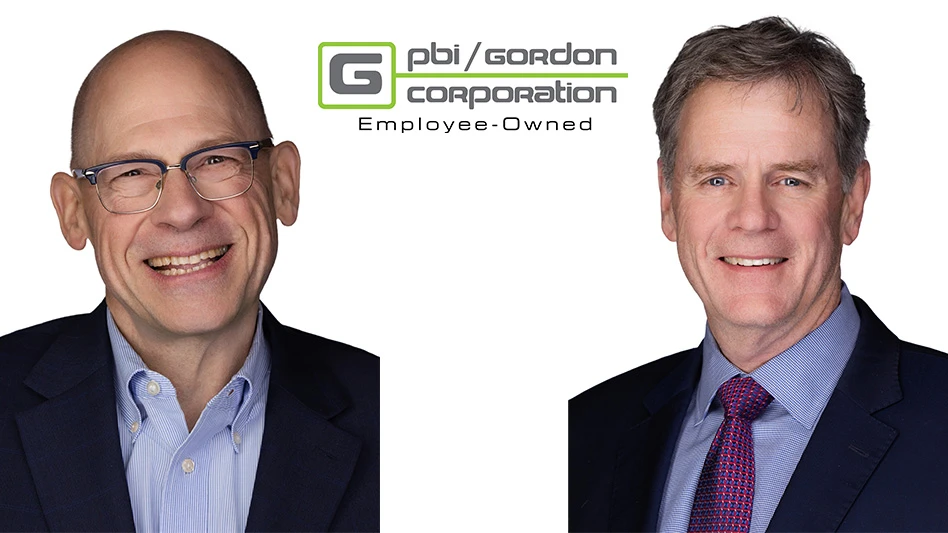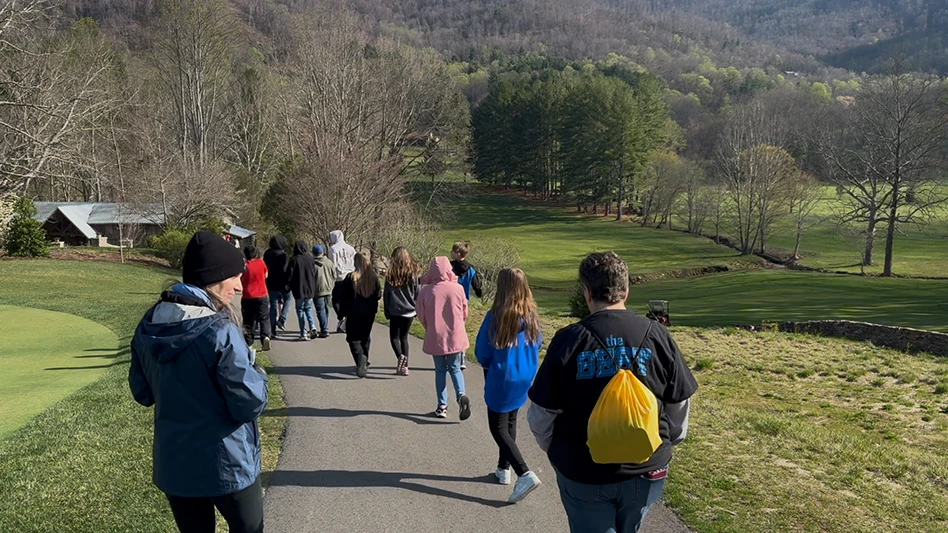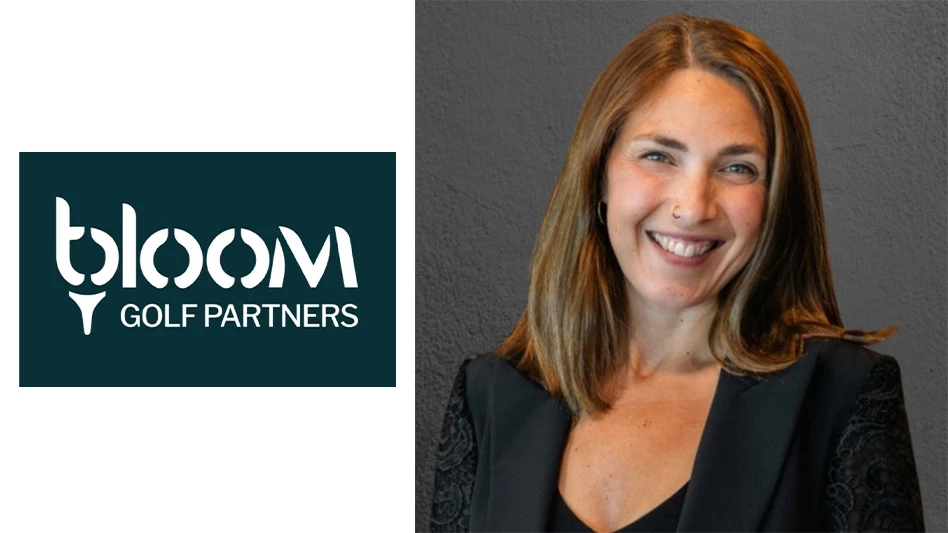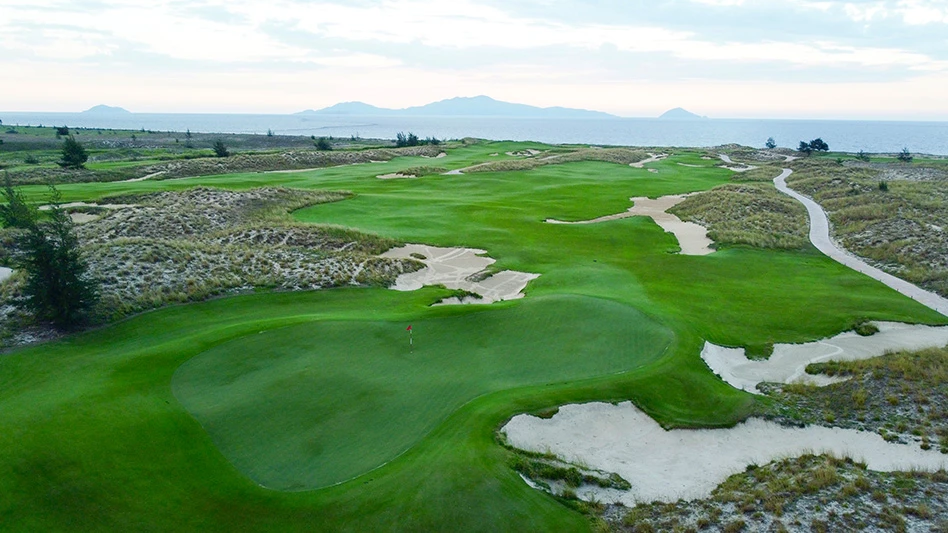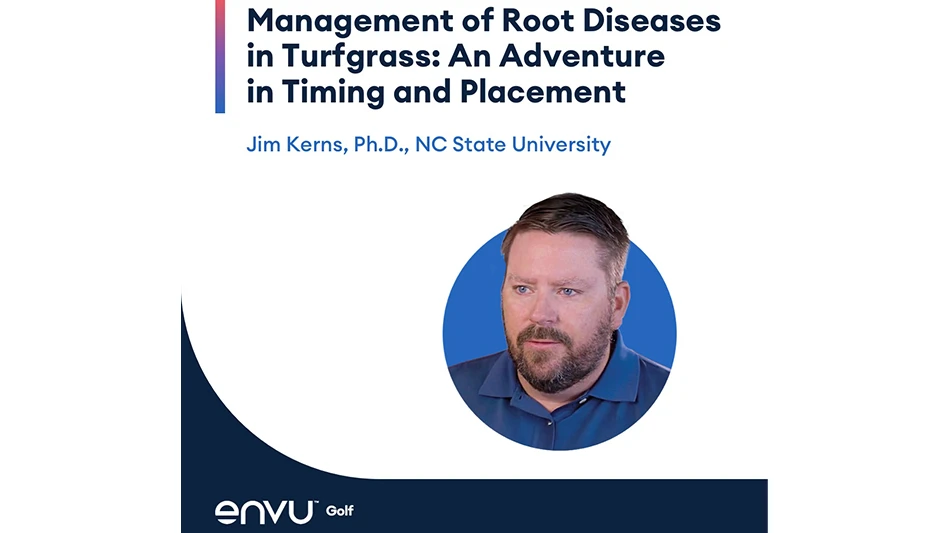Golf Course News interviews Pat Finlen, director of golf maintenance operations at The Olympic Club in San Francisco. (Editor's note: This is a longer version of what appears in the January issue.)
Q: Explain how you got into the business.
I started playing golf when I was 11. I caddied at a course in Chicago for a year before my family moved to Kansas City where I started picking up balls on the driving range at Quivira Lake & Country Club. From ages 12 to 15, I worked in the golf shop doing whatever odd job they had. In the fall of my sophomore year while working in the golf shop, I was asked to help out on the golf course maintenance staff because most of their help had returned to school. They asked if I’d come and help on weekends, and that was how I originally started working on a golf course – hand mowing greens when I was 15.
From there, I continued working through high school, probably to the detriment of my golf game. I was a very good golfer as a sophomore playing on the high school golf team. I wouldn’t say I became worse, but I didn’t get better like I should have during my junior and senior years. I took every available hour to work on the golf course because I loved being outside, operating equipment and seeing the results of the work I did. Many kids at that age have jobs in which it’s tough to measure what they’re doing, but being on a golf course, it’s easy to see the progress of your work.
I went to college at Kansas University and worked the first two years on a local course and then transferred to Rockhurst University, a Jesuit college in Kansas City for my final two years. I didn’t work on a golf course from my sophomore year in college until I was 23. I graduated college with a degree in business administration. I wasn’t looking to go back on a golf course. I went into the landscape/nursery business the final year Jimmy Carter was in office and borrowed a fair amount of money. Interest rates at that time were at 21 percent. I lasted two years and then had to get out. I had to find a job, so I went back to the two courses where I worked previously – Quivira Lake and Alvamar Golf and Country Club in Lawrence, Kan. I ended up at Quivira Lake and was very fortunate to do so. Within a year, the assistant superintendent left and I became the assistant superintendent. A year after that in 1984, the superintendent left, and I became the superintendent. It was matter of good timing.
Q: How did you manage to become a superintendent without a turfgrass degree?
I was at the right place in the right time. Quivira Lake is the place where I started picking up balls on the driving range when I was 12 and the same place where I first started on a maintenance crew, so most of the members there knew me.
I was told by many that my career wouldn’t go far without a turf degree. I took many seminars and read every turfgrass book I could get my hands. I talked to as many superintendents as I could and continued to read.
It was pure timing to be there when the assistant left. If it were today, that wouldn’t have happened. It was similar to a lot of clubs back then, but the demands have changed dramatically as well as the role of the superintendent.
Q: Where did you go from there?
I stayed at Quivira for two years and then took a job in Virginia Beach, Va., building a new golf course. I was there about two years and returned to Quivira Lake when they combined the superintendent position with the residential maintenance manager position. In the new position, I was responsible for not just the golf course, but also the roads, common areas, lake and sewers. That experience was a great foundation for my career because I learned about more than just golf. I gained a lot of experience dealing with contracts and projects.
I ended up hiring three assistants to work for me – two on the golf course and one on the nongolf side. That’s when the job became much more of a management position. I still wanted to get out there and do the work, but couldn’t.
I stayed in that role for 11 years. I had a great general manager, John Miller, and a great greens chairman, Terry Williams. Those two, along with many members, taught me a lot about ethics and how to operate in a business climate.
Q: What was next?
I ended up going to Bayonet and Black Horse Golf Courses in Seaside, Calif. It’s a 36-hole facility that used to be a part of Fort Ord. My wife and I always had a desire to go to the Northwest, but there were few jobs advertised. After interviewing unsuccessfully in Reno and near Boise, the job in Seaside opened in 1998. It was listed through the GCSAA referral service.
We didn’t think we could afford to live in California. I sent my resume and got an interview. It just so happened that the interview was the week of the U.S. Open, which was being held at The Olympic Club that year. I was the last person to interview and was asked to stay around for a while and eventually was offered the job while still there. I told them I would go look at housing and was just shocked. I was coming out of Kansas City, which is one of the most affordable housing areas in the country and looking in the Monterey area – the prices were astronomical. I told them I couldn’t take the job. They told me to think about it for a couple days and come back with what I wanted. In the meantime, I watched the U.S. Open for a couple days, went back to Seaside, told them what I needed, and we eventually settled.
I came out to Seaside in August of that year and spent four months working until my family came out. We bought a house and were there three and half years until I came here.
I credit getting that job with my involvement with the GCSAA and serving on committees and the chapter in Kansas City. From the networking aspect of it, I had met and knew enough people that when the time came for that job to open, it happened to be a person on a GCSAA committee who interviewed me. We didn’t know each other at that time, but he has since told me that my service on a GCSAA Committee contributed to me getting an interview.
Q: Why the move from Bayonet and Black Horse to The Olympic Club?
At the time, just before 9/11, I got to the point where I saw changes in the golf market taking place. Bayonet and Black Horse was a daily-fee, 36-hole facility. We had done a tremendous amount of construction and improved it. It was slated to be taken over by TPC, but the deal was delayed after 9/11, and it looked like it wasn’t going to happen, so I started to look elsewhere. I interviewed for a few other positions but didn’t get them.
I went to Kansas City for a GCSAA committee meeting, checked my messages one day, and there was a message from a search firm looking for a superintendent. They wouldn’t tell me where the location was other than it was in the San Francisco area and it was multicourse facility. Right away I knew what facility it was because that was the only opening at the time.
I went through the process of sending my resume and the phone interview and got selected to come up and do a personal interview. That was November 2001. The hiring process was slow and methodical. The job had been offered to another candidate before me, but he eventually turned it down because he was out of state and didn’t think he could afford the move.
Q: What were your thoughts while interviewing?
I was scared to death interviewing for The Olympic Club. I’m a pretty humble person, and my career path has never been to seek employment at a high-profile golf course. It was never something I chased. I was extremely nervous. I’m a quiet person and don’t interview well. I even admitted that in the interview. But I left the interview feeling pretty good about it, until it dragged on for a couple months.
Q: What factored into you getting the job?
The fact that I lived in California had somewhat of a factor, but more importantly was the fact that I was at a 36-hole facility and The Olympic Club is a 45-hole facility. My business background played a part because we’re big facility. We have a lot going on with a large staff. It’s much more of a management job than when I first started at an 18-hole facility. We have a superintendent for each 18-hole course, and they both have assistants. We also have an assistant on the nine-hole course.
Q: Were you under more pressure maintaining courses at such a high-profile club?
You always have an image of what a place is like, and that typically changes after your get hired. I came here three years earlier and watched the U.S. Open. I knew it was a course that had a lot of history and prestige to it. I was just thrilled to be considered for the job. And then to get offered the job and show up three weeks later for work is a humbling experience.
Once I got here, I couldn’t have had a better situation because our general manager, Dennis Bouey, started a month before I did. He has been fantastic and is another person who has a lot of great management experience and is a good teacher. He has been great to work with. I also had a new greens chairman who is a tremendous asset and who has been good to work with, as well as the board and committees. I couldn’t have fallen into a better situation that put me so much at ease. It would have been much tougher without those people in place helping me along.
Q: Explain the environmental regulations in California.
Each year you meet with your county agricultural advisor and give him a list of the products you want to use during the year. There’s a number of pesticides that, when they become available in other parts of the county, might take three to five years for them to become available in California because, in addition to the EPA label registration, they have to have a California registration, which many other states don’t require.
Beyond that, there are strict reporting requirements. Every month, you have to turn in exactly what you’ve used to your county agricultural advisor. For any 2,4-D or similar products, you have to give notice of intent to use those. That notice of intent has to be given within 24 hours. The county agriculture department then has the authority to tell you whether or not you can make that application depending on the weather. They also have the right to come out and inspect the course at any time. We get inspected fairly often. The state is very stringent about the products you use, how you use them, the signage you have and the personal protective equipment used.
The city-run golf courses in San Francisco have there own reporting requirements. They operate under their own department rather than through the San Francisco agricultural department. They have a whole other realm of stringent requirements that they have self-adopted through the city that we don’t have to comply with. It’s a much more restrictive list than what we operate under. We make a thorough effort to be in compliance at all times.
Q: Are the regulations necessary?
When I first moved here, I thought the regulations had gone too far, but after you operate under something like this, you realize they’re good regulations. We’re all afraid of doing something different, but it isn’t that hard. It’s just a few more hoops you have to jump through. I’ve told many of my friends that growing grass out here is much easier than in Kansas City or Virginia, it’s the politics of growing grass that are much different. The regulations make you operate in a framework that has you on your toes a bit more than you normally would be. We are very cognizant of what were applying, when we apply it, how we store it and what we do with it, whereas if we hadn’t had these rules and regulations, things might be different.
Q: Do you solve problems differently because of the tighter framework under which you operate?
That’s a tough one because the weather is so different here. It’s cool out here almost the entire year. We usually get to about 65 degree during the day. We’re in the fog half the year, so we have a more constant disease pressure, but not the extreme disease pressures that many other parts of the country experience during the summer months.
The weather makes you think differently about how you use pesticides. We have snow mold pressure 12 months a year. We’ve learned there are certain months in the spring and fall that, because of the type of weather we’re having, we can get away with not applying a preventive product or stretching out an application much longer than we normally would. I can’t attribute that to the pesticide regulations. That’s just using good agronomic knowledge any superintendent would practice in any part of the country.
Q: Explain the importance of being involved with associations.
It makes you a better superintendent because of the people and role models you meet. In Kansas City, I was a member of Heart of America Golf Course Superintendents Association and went on to become its president, and it was through that involvement that I initially got involved with the GCSAA and working on committees. My interest in the GCSAA and the role that the golf course superintendent has in golf has propelled my career through the people I have met.
When I moved to California, I immediately got involved in the GCSA of Northern California. Within two years, I ran for its board of directors and was president last year. Part of that involvement lead becoming involved on the state board because it pulls members from each of the six respective chapters to serve on the state board. I’m their president this year. I’m also a candidate for the GSCAA board of directors.
In serving associations, my goal isn’t to become president. You have more fun the years you’re not president because you get a chance to become involved in many different things.
Q: How do you get nominated for the GCSAA board?
Your chapter sends a letter on to the GSCAA Nominating Committee on your behalf.
This group looked at whether the location of the GCSAA headquarters had an impact upon the association achieving its mission, vision and strategic goals. We had a great resource group. In fact, there are two members of that group that got elected last year – Bob Randquist and Jim Fitzroy. There are two members of that resource group running this year – Sandy Queen and myself. It’s one of those things that when you find out the time is right for you with your career and family and if you want to do it, you do it. From a timing standpoint, if I’m going to do to it, it has to be now because of the U.S. Open.
Q: Have you started planning for the Open?
We’re doing quite a few things to get ready for the Amateur, and that is the driving force for us right now. Some of those things will dictate the path or direction we would go for the Open. We have a number of new tees going in that are adding additional yardage. How well the amateur’s do will gauge whether we do more of those tees or not.
Q: What is the biggest challenge you deal with on a regular basis.
This is the first position I’ve had that’s a union facility. Like with the pesticides rules and regulation, it makes you operate under a different framework. Right or wrong, we are what we are, and it’s the biggest challenge, but it’s one that makes you think and act differently. It also requires you to solve problems in a different manner than what you are used to. Some solve problems by just getting rid of a person. In a union environment, that typically doesn’t happen. You get creative with some of the solutions you have with employee issues.
We negotiated a contract with the union three years ago that expires this March, so this January we’ll begin negotiations, which is a very intensive process – one of you is on the far left and the other is on the far right, and you have to bring everyone to the center. It becomes a pretty good learning experience about people and how to negotiate.
Q: What are the best and worst parts of your job?
There are a number of best parts, and one is the enjoyment of seeing the results of your work. You can go out and do a project and take an area that needs attention and transform it into whatever vision you or the architect has and have an outcome that’s outstanding. Once you complete a project, you get to see the satisfaction golfers have from the work you do. The constant interaction with golfers and the conditions I provide that make them happy is rewarding for me.
I also like to see those that work for me go on and achieve something for themselves. Not that we want to run people through here with our program, but we want to bring people in here with a career path in mind to go on and be a superintendent on their own.
The part of the job that bothers me the most is seeing middle age superintendents lose their positions. Whether they lose them because it’s their own fault or because of something unjust, they have an extremely hard time re-entering the job market. There’s this inclination to hire the young because they’re stronger, quicker and smarter, but many people find out that isn’t so. There’s many talented superintendent who are in their 50s that often get overlooked.
Q: Where’s the superintendent profession headed?
The business model for golf has changed and will continue to change. I’ve heard Steve Mona say that no longer will three people be able to make the top salaries at any type of facility – there will only be two. I really believe down the road, the business model at public and resort golf courses, and eventually many private courses, will have only one making a great salary. It could be the superintendent or the golf professional, director of golf or the club manager. There will only be one person in charge of the entire facility. I tend to look at the superintendent to be that person. We are the most creative of the group of professionals at a facility. We need to step up to the plate. Our association is stepping up to the plate by offering seminars for those who want to continue on. If you decide to be that person, you need to be prepared and utilize the tools your association has to offer.
Superintendents are going to continue to see more responsibility thrown their way, and they need to be prepared to take it on, or let someone else be in charge.
Q: What agronomic changes do you foresee?
We’ve hit a plateau with low cutting heights. I’ve heard the PGA Tour and USGA talk about rolling back some of the changes that have been made during the past four or five years to where we go to these extremely low cutting heights on greens, tees and fairways for events. The trend to continue with these low cutting heights is going to slowly change during the next four or five years. That doesn’t mean they’re going back to where they were. We just won’t see the rapid progression where every year we have to have something shorter, tighter and faster.
But the demand for playing conditions will continue. We see it in bunkers now. Bunkers are hazards, but most golfers want all bunkers to be consistent and play alike, which isn’t typical of hazards, but it’s typical of what the American golfer wants, which is a continuation of something bigger and better than the next guy down the street.
To a degree, we are our own worst enemy. Our desire to please the people we work for propels us to do things that might not be sound agronomics or sound from a sustainable standpoint. As superintendents, we need to be more creative in achieving better playing conditions than just lowering the height of cut. We have hit a certain level, and that’s about as far as we can go. Most courses can’t continue to achieve better playing conditions on a year round basis without incurring increased costs.
With the business model of golf changing, a lot of it is being driven by how much money is spent maintaining the golf course. It used to be that we were extremely happy just to take our budget and be left alone to do our job. But that’s not going to happen at most facilities now. The superintendent is going to be relied upon to be a part of the management team, to cut costs, to operate more efficiently, and to continually provide better playing conditions. That’s going to be the big change and demand on superintendents for the future.
Q: Careerwise, where would you like to go from here?
I’m 47 years old, and when you are in your late 40s, you think about retirement, not because you want to retire, but you want to know how you will get yourself to retirement. I was never one to say I want to be at this type of course or that type of course. I’m more of a person who does the best job I can do and hope that opens up other doors. It’s not that I’m trying to open up other doors right now because I’m extremely happy where I’m working. I couldn’t have a better situation. We have the U.S. Amateur coming in 2007 and the U.S. Open in 2012. I’m certainly here through the U.S. Open, and I’m not looking for anything right after that. I want to get to 2012 and do the best I can and portray the club in the best light possible. GCN
Pat Finlen can be reached at pfinlen@olyclub.com.

Explore the January 2006 Issue
Check out more from this issue and find your next story to read.
Latest from Golf Course Industry
- From the publisher’s pen: Watery dilemma
- The Aquatrols Company hires marketing manager
- Renovating Bredemus in West Texas
- Renovation starts at Okatie Creek GC at Sun City Hilton Head
- The Fittest Podcast in Turf: Episode 1
- New 6-hole course debuts in Oklahoma
- GCSAA announces Grassroots Ambassador Leadership Award recipients
- Reel Turf Techs: David Gummo

